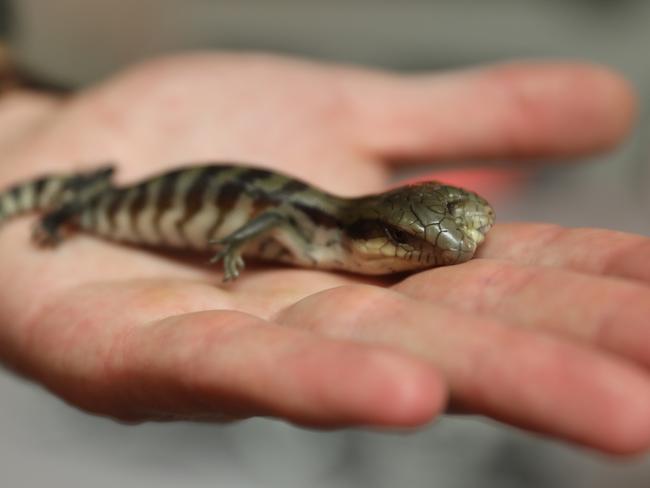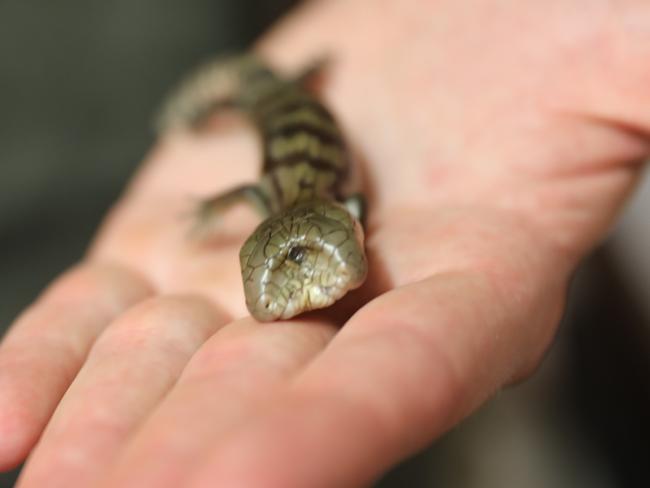Two headed lizard handed in to Australian Reptile Park
VIDEO: It’s not often keepers at the Australian Reptile Park are surprised by a hand in from the member of the public, but then a two headed blue tongue lizard turned up.
It’s not often keepers at the Australian Reptile Park are surprised by a hand in from the member of the public, but when a two headed Blue Tongue Lizard turned up, it had keepers both interested and excited.
In this extremely rare case, the blue tongue lizard has two functioning mouths (Yes, this means he has two blue tongues! and has affectionately been named ‘Lucky’.
Reptile Park staff said he was unlikely to have survived in the wild.

Head of Reptiles Daniel Rumsey said in the wild animals with deformities are often unable to eat or hunt properly and are predated upon due to being slightly weaker.
“However, Lucky the Blue Tongue is being treated with the upmost best care and we hope he’ll live a long and happy life as perhaps the most unique lizards here,” he said.
Mr Rumsey said blue tongues were an iconic part of Australia and Lucky was one “special little guy”.

“He’s developing well and is a happy and healthy lizard,” he said.
“Unfortunately, these things can happen. We’ve seen two headed snakes, sharks and now lizards.
“As an avid reptile lover, it’s always exciting to have something handed in that’s so different and unusual; but we will treat him like the special little guy he is.”
Blue tongue lizards are extremely common and are often found in backyards all around Australia happily munching away on snails in gardens, and when they feel threatened they will expose their iconic blue tongue as a warning. When threatened, blue-tongues turn towards the threat, open their mouth wide and stick out their broad blue tongue that contrasts vividly with the pink mouth.

This display, together with the large size of the head, may frighten off predators. If the threat does not go away, blue-tongues may hiss and flatten out the body, making themselves look bigger. A frightened blue-tongue may bite if it is picked up.
If handled roughly by their tail, Eastern Blue-tongues, particularly young ones, may drop the tail. The tail stump rapidly heals and a shorter regenerated tail grows back after a while.


